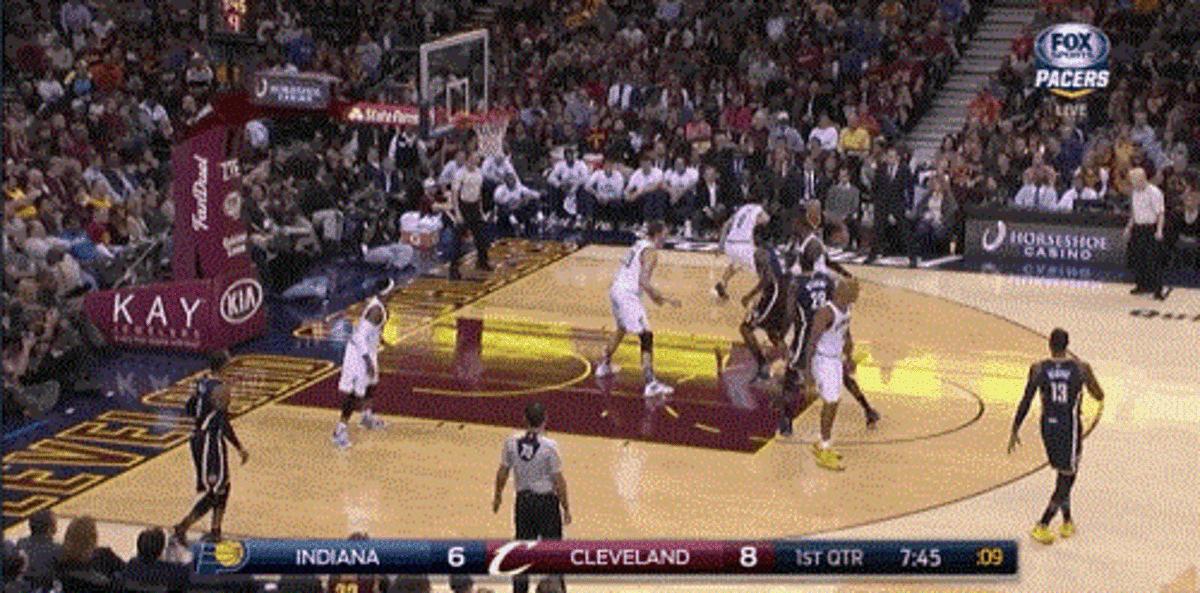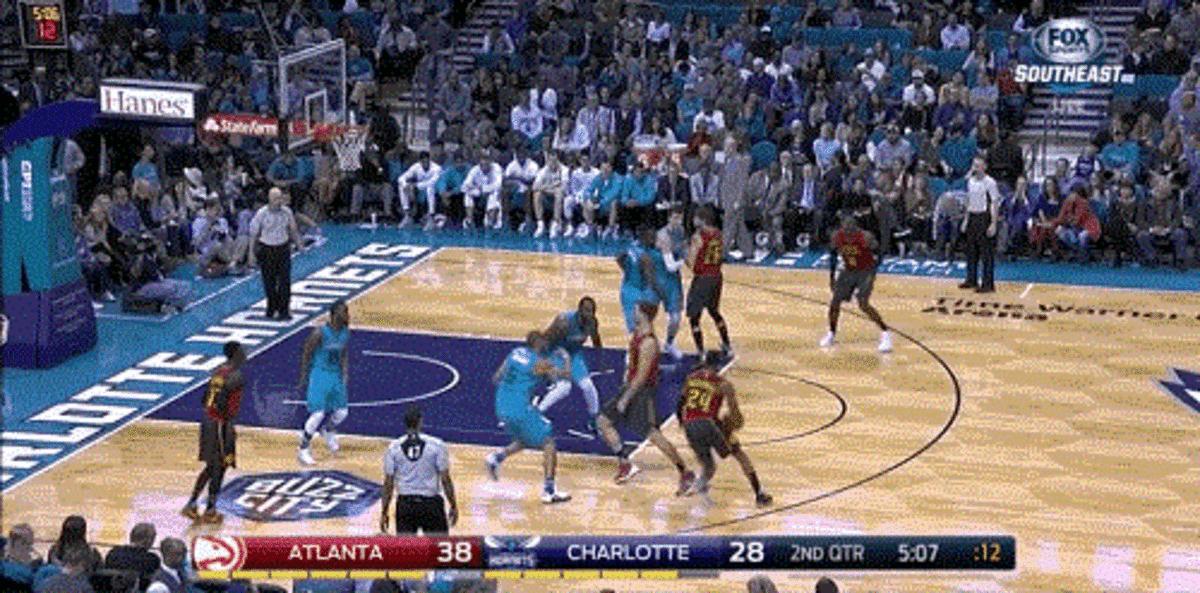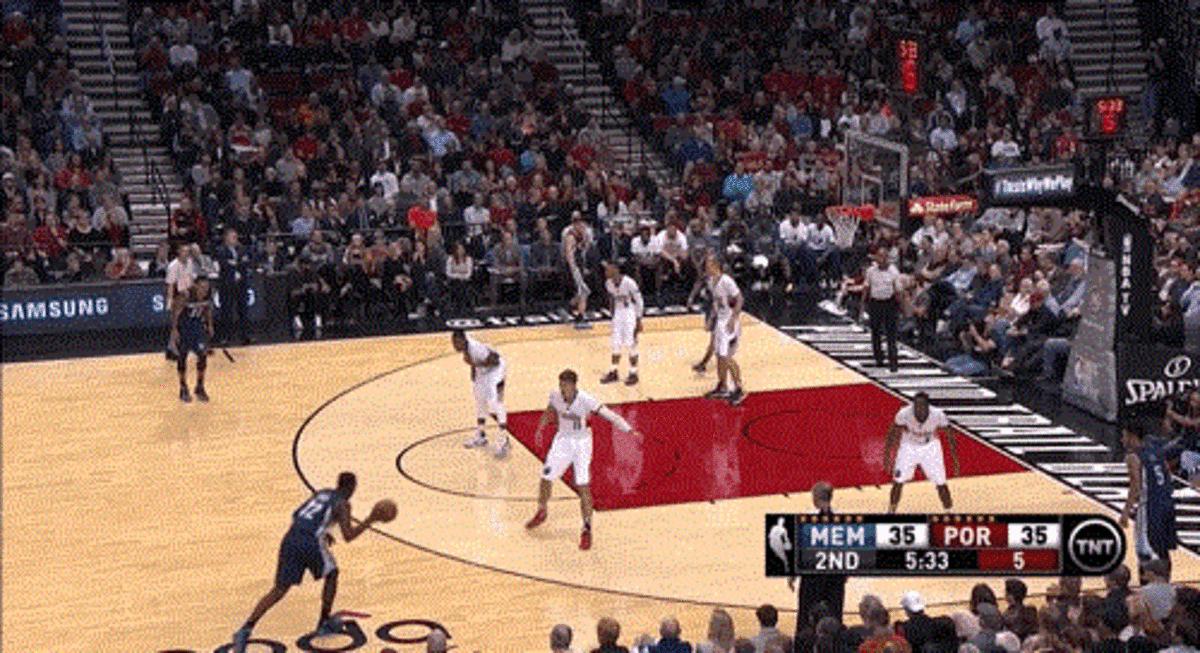Four NBA predictions that appear to have already gone wrong

In the course of doing preview podcasts for all 30 teams, one naturally provides a prediction or two. Even more naturally, those predictions can look very foolish, even after just the first two weeks of the NBA season. It's tempting to cry “small sample size!” but a simple “it’s early” is verboten in these parts. There is much to be learned already, even if many components of the performances are unlikely to continue.
So, which preseason predictions are already in hot water? (All stats through Sunday's games unless otherwise noted.)
1. Cleveland would struggle early
Although the Cavaliers' NBA Finals spot has more or less been considered a fait accompli since the moment Kevin Love inked a five-year deal to return, pundits (including this writer) pegged them to struggle out of the gate.
Although Cleveland was brilliant defensively in the playoffs a year ago, that was accomplished largely without Love. Worse, ImanShumpert, their only consistent defender on the wing, is out until January with a wrist injury. TimofeyMozgov’s surgically repaired knee was giving him trouble, Tristan Thompson missed all of training camp, and Love had just completed six months of rehab on his shoulder. Former stalwart Anderson Varejao was coming off a torn Achilles. LeBron James missed much of preseason after receiving an injection in his troublesome back. Kyrie Irving was to be out indefinitely coming off his fractured knee. A difficult start akin to last season’s was not out of the question.
NBA Power Rankings: Competition emerges in the East; No. 1 stands firm
A desultory opening-night loss to the Bulls did not bode well, but since then the Cavaliers have ripped off six straight wins. Granted, they have not faced a murderer’s row of opponents (including beating the 76ers twice already), but the Cavs are in the top 10 in defensive points per possession despite all those (theoretically) limiting factors. The addition of Matthew Dellavedova to the rotation has helped on defense while Mo Williams has done a passable Irving imitation on the perimeter.
The biggest transformation defensively, though, has been Love. Cleveland’s power forward is oft-maligned for his defense (though his last couple of seasons in Minnesota were not as bad as his reputation implied), and his performance in the early part of last year was miserable. But this year, the Cavaliers are allowing only 93.0 points per 100 possessions with Love on the floor.

It is too early for such statistics to have a ton of predictive power (for example, opponents are shooting a fluky 25% on threes when Love is on the floor, per NBAWowy.com), but subjectively, Love appears much improved. Gone are the uncontested layups that plagued the Cavaliers in the early part of last season as Love failed to rotate to drivers and got cooked in pick-and-rolls. Instead, he's done a better job preventing penetration and moving his feet in isolation and pick-and-roll situations.
The Cavs’ offense is a certain powerhouse once Irving returns, but defense was their potential undoing. If Love can keep it up as the competition stiffens, Cleveland could be an even more formidable opponent for the eventual West champion.
Mea Culpa rating: 9
2. The Hawks would regress
With the San Antonio roots of coach Mike Budenholzer and Atlanta's ascent to the top of the East standings a year ago, they have (correctly or not) taken on the moniker "Spurs East." Add another feather to that cap; like the Spurs for so many years, the relatively older Hawks were considered likely to regress this year, but appear to be ready for another highly successful season.
The loss of DeMarre Carroll, another year of age for Al Horford, Paul Millsap, Kyle Korver, and Thabo Sefolosha, a weak point differential, an uninspired playoff run, and worse regular-season health were potential reasons for a step back. But thus far, the 7–2 Hawks (despite a home loss to Minnesota Monday night where they erased a 34-point deficit before losing late) look like a similar machine to a year ago.
Kent Bazemore, the latest product of Atlanta’s development system, has stepped right into Carroll’s spot. He will cool off a bit after draining a ridiculous 15-of-27 from three so far, but he certainly appears to be an improved shooter, both in success rate and his versatility from beyond the arc. Bazemore also has boosted his dribble game and improved his off-hand.

and Jeff Teague are playing well enough that further improvement this year seems possible.
That said, the Hawks are again outperforming their point differential, and they're 5–0 against teams currently under .500. Still, those seven wins are already in the books. If they can stay healthy, Atlanta is looking like a solid bet to at least post in the low 50s in wins, a fate many pundits thought unlikely when the season began.
Mea Culpa rating: 5
3. Portland was a bottom-four team in the West
Stephen Curry is setting the league alight with his ability to pull up off the dribble from beyond the arc. His shooting ability is unique in forcing teams to bring their bigs away from the hoop on the pick-and-roll. In Damian Lillard and C.J. McCollum, the Trail Blazers may have the league’s two closest facsimiles thus far.
Luke Walton Q&A: Warriors' dominant start, filling in for Steve Kerr and more
Although those two are the Blazers’ only two creators — at usage rates of 31.7 and 26.6%, respectively, they are the only two rotation guys above the league average of 20 — Portland sports the league’s fifth-best offense. On defense, the Blazers have gotten worked at the point of attack by teams with athletic point guards (Phoenix twice and Detroit) while defending quite adequately elsewhere.
Both sides of the floor may be due for some regression. McCollum is shooting an unsustainable 32-for-63 on twos outside the restricted area, and the team as a whole makes nearly half of such shots. What’s more, opponents are at only 30.6% on threes. (Research has repeatedly shown that good three-point defense occurs via preventing threes from being taken; teams have not demonstrated the consistent ability to force a low percentage of makes.) Heretofore non-shooters Al-Farouq Aminu and Mo Harkless are 16-of-41 combined on threes. Also, Meyers Leonard is playing almost all his minutes at power forward, a position for which he is far too slow.
With Leonard on the court, Portland has allowed an unacceptable 108.0 points per 100 possessions.

Nevertheless, if the Blazers can continue their adequate defense, they could sniff .500 on the strength of their offense and depth. Lillard and McCollum are splitting nearly all of the minutes at point guard, meaning Portland always has a solid creator on the floor. Portland has gotten adequate performances from everyone in its rotation, playing especially well with reserves Ed Davis and Harkless (acquired for nothing from Orlando) on the floor.
With so many young players so far above their previous high-water marks, it is quite likely that the performances so far consist of quite a bit of noise, especially the hot outside shooting. Still, Portland is off to a nice start, and looks like a decent bet for over 30 wins. That and development from Neal Olshey’s cast of young players would make a successful season in the Rose City.
Mea Culpa rating: 6
4. Detroit was too inexperienced
Coming into the year, the Pistons were mired in true ignominy after an unfathomable six consecutive years with both a below-average offense and defense. Looking at the talent on hand, there was little reason to believe that would change. Detroit’s starting five featured not a single player with a history of defending at an above-average level.
Pistons leaving no game unwatched in hopes of uncovering the NBA's secrets
Yet Stan Van Gundy has coaxed one of the league’s best defenses out of his athletic but inexperienced roster. The Pistons (now 5–2 after losing at Golden State on Monday) also have destroyed opponents on the glass via Andre Drummond, who is maturing into perhaps the league’s best rebounder since Dennis Rodman. Without any other premier rebounders on the roster, Detroit still ranks second in both offensive and defensive rebounding percentage, and Drummond had grabbed 27.7% of all available rebounds. Though that percentage (probably?) will come down, it would be the highest over a full season since the NBA-ABA merger, per Basketball-Reference.com.
On offense, the Reggie Jackson/Drummond pick-and-roll has confounded opponents because the big (or a help defender) must keep a body on Drummond at all times. Otherwise, he’ll dunk an alley-oop or grab the offensive rebound if Jackson misses. With Drummond and Jackson on the floor together, Detroit has outscored opponents by 18.8 points per 100 possessions. In fact, the Pistons’ four highest-minute players (Drummond, Jackson, Kentavious Caldwell-Pope, and Marcus Morris) all have net ratings comfortably in double digits.
The same cannot be said for Detroit’s bench. With Jodie Meeks sidelined for 12 to 16 weeks, the Pistons are relying on Steve Blake, Aron Baynes, and Reggie Bullock for rotation minutes. None of them provide much reason to believe they can provide quality rotation minutes at this point, and bench-heavy units featuring combinations of those three have been destroyed.
Backup center, in particular, was not supposed to be a problem after Van Gundy gave Baynes a three-year, $19.5 million contract in the offseason. Van Gundy defended the Baynes contract on the grounds that it was worth overpaying by a couple million to get a reliable backup center. But the problem with the contract was not so much the overpayment as the evaluation; the 29-year-old Baynes always has been closer to a replacement-level third center than a quality backup. Sure enough, Baynes’ net rating through six games was horrific (-29.2), and Van Gundy has only been able to keep him on the court for 10.8 minutes per game.
Van Gundy has few options at his current disposal to stanch that bleeding. He is rightly loath to split up the Drummond/Jackson pick-and-roll combo, but Detroit has nowhere to go for offense on the second unit without those two. Playing Marcus Morris with the second unit and trying to squeeze some offense out of his post-ups might be the best stopgap. Brandon Jennings ultimately could be a solution, but it would be difficult to fully count on his effectiveness upon his return from a torn Achilles sometime around New Year’s.
Van Gundy the coach may have to turn to Van Gundy the executive if Detroit wants to really make some noise in the East; a trade for a second-unit scorer might be required. But it appears that a dominant core could carry it to a playoff berth either way.
Mea Culpa rating: 4

